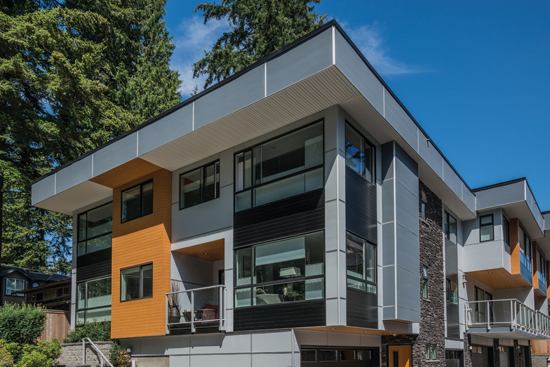Innovations in Aluminum Cladding Systems
Learning Objectives:
- Define continuous insulation (ci) and the areas on a building where it can effectively improve thermal performance.
- Describe the code and fire performance attributes of aluminum.
- Explain the benefits of an aluminum back framing cladding system as it relates to building thermal performance.
- Discuss the green and sustainable attributes of fabricating and specifying aluminum cladding with wood grain appearance.
Credits:
The reduction of fossil fuel-based energy continues to be encouraged by national and local organizations that ultimately seek designers to create net-zero energy buildings. While this remains a top priority, aesthetics still play a vital role in design decisions. Dovetailing these two concerns can become a design balancing act, but in recent years building materials and systems have evolved, offering the architectural community an ever-broadening array of options in creating visually appealing, eco-friendly structures.
Aluminum exterior wall systems are a prime example of that evolution. Originally seen as a new and innovative breakthrough, aluminum quickly became a commonplace building material that has experienced a new surge in popularity due to its composition of recycled content and recyclable attributes. It is routinely used in many interior and exterior building applications due to its light weight, high strength, durability, and easy fabrication. It has even become possible to finish it so it looks like anything but metal. Today, aluminum products can be specified that are finished to look like wood-grained materials, creating striking visual effects in both commercial and residential buildings in the United States and Canada.
In addition to the visual appearance changes, aluminum can be used as part of an innovative cladding support system. Such a system can also allow for the installation of continuous insulation to meet the requirements of energy codes and standards. Altogether, a fully coordinated aluminum wall system directly impacts energy use in buildings, contributes to green and sustainable design, and provides great aesthetic value as well. This article will discuss how all of these aspects can come together successfully.

Photo courtesy of Longboard – a division of Mayne Coatings Corp.
Aluminum cladding systems provide a range of metallic and wood-grained appearances, the ability to use high-performance continuous insulation, and fully coordinated soffits and fascia.










